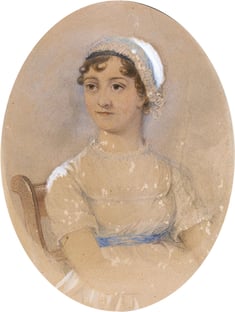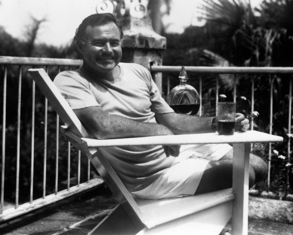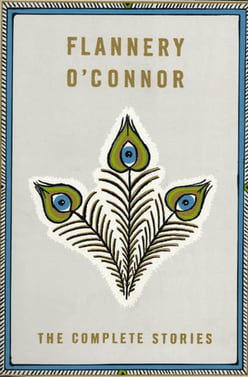As the year winds down, the writers and staff at Books Tell You Why would like to take a moment to thank all of our loyal readers. Engaging with you over the course of 2016 has been a delight. It is your smart commentary, unique insights, and thoughtful criticism that make this blog a remarkable platform for rare book collectors and book-lovers of all kinds.
Let’s take a look back at some of our highlights this year. Here are the ten most-read posts on blogis liborum, written and published in 2016.10. Collecting Winnie-the-Pooh
 To know Winnie-the-Pooh is to love Winnie-the-Pooh. And thanks in large part to Disney and the commercialization of the beloved classic children’s literature character, almost everyone knows Winnie-the-Pooh. Walk into any store and you’ll see Pooh pajamas, Pooh placemats, Pooh picture frames, and countless other Pooh-inspired paraphernalia. It’s safe to say the image of Pooh is a familiar one. Read more.
To know Winnie-the-Pooh is to love Winnie-the-Pooh. And thanks in large part to Disney and the commercialization of the beloved classic children’s literature character, almost everyone knows Winnie-the-Pooh. Walk into any store and you’ll see Pooh pajamas, Pooh placemats, Pooh picture frames, and countless other Pooh-inspired paraphernalia. It’s safe to say the image of Pooh is a familiar one. Read more.
9. Five Things to Know About the Horatio Alger Myth
If you’re confused after reading the title of this article, odds are you’re not alone. Even the most savvy, in-tune reader might not be able to explain the Horatio Alger Myth or its significance in late 19th Century American literature. And that’s strange given how prevalent the Horatio Alger Myth is and how it managed to permeate modern American storytelling in ways that today ring as cliché, tired, and uninspired. Read more.
8. 10 Timeless Quotes from Pride and Prejudice (And Why They Still Matter)
 Today, we celebrate Jane Austen’s beloved novel, Pride and Prejudice, on the anniversary of its publication. How does one do such a book justice? It is nearly impossible. So, we thought we’d let Ms. Austen’s own words do most of the talking. After all, Pride and Prejudice is timeless, and the following quotes—and the lessons they teach us—will continue to inspire, chastise, encourage, and humor readers for generations to come. Read more.
Today, we celebrate Jane Austen’s beloved novel, Pride and Prejudice, on the anniversary of its publication. How does one do such a book justice? It is nearly impossible. So, we thought we’d let Ms. Austen’s own words do most of the talking. After all, Pride and Prejudice is timeless, and the following quotes—and the lessons they teach us—will continue to inspire, chastise, encourage, and humor readers for generations to come. Read more.
7. Remaining Relevant: Top Ten Victorian Novels
The Victorian Era, which corresponds to the reign of Queen Victoria beginning in 1837, gave birth to some of the best loved novels in literary history. Like most eras, it produced works that both reflected and rebelled against the social mores of the time. Their characters and themes, however, seem to transcend time and place, and present us with stories worth revisiting years, decades, and even centuries later. Here is our list of the top ten Victorian novels. Read more.
6. The Many Homes of Ernest Hemingway
 What would it look like to take a trek across the country (and outside the country, too) to visit all of the homes and favorite haunts of Ernest Hemingway? The novelist and short-story writer made his homes in seemingly disparate parts of the United States and the Caribbean, not to mention the years he spent living abroad as an expatriate in Paris, France. We’re intrigued by the varied climates that captured the writer’s interest, particularly in relation to his relatively domestic beginnings in Oak Park, Illinois. So, if you were going to take a tour through Hemingway’s life, what homes would need to make your list? Read more.
What would it look like to take a trek across the country (and outside the country, too) to visit all of the homes and favorite haunts of Ernest Hemingway? The novelist and short-story writer made his homes in seemingly disparate parts of the United States and the Caribbean, not to mention the years he spent living abroad as an expatriate in Paris, France. We’re intrigued by the varied climates that captured the writer’s interest, particularly in relation to his relatively domestic beginnings in Oak Park, Illinois. So, if you were going to take a tour through Hemingway’s life, what homes would need to make your list? Read more.
5. The Origins and History of the American Short Story
 The short story and jazz music have taken quite the similar journey through the cultural consciousness of American society. Now relegated to niche art forms, both flourished in the early and mid-parts of the 20th Century, reaching a level of popularity that transcended age, race, and regionalism. Simply put, everyone listened to jazz and everyone read short stories, and everyone talked about them as important exports of American culture. Read more.
The short story and jazz music have taken quite the similar journey through the cultural consciousness of American society. Now relegated to niche art forms, both flourished in the early and mid-parts of the 20th Century, reaching a level of popularity that transcended age, race, and regionalism. Simply put, everyone listened to jazz and everyone read short stories, and everyone talked about them as important exports of American culture. Read more.
4. How to Beat the Bookworm
What is a bookworm, anyway? Is it the baby of a beetle? A living creature that loves books? A larvae placed there by a moth? Why do we care, again? If you're interested in learning more about how to identify and beat the bookworm in order to keep your books and collection safe, you're in the right place. Read on for our best bookworm-busting strategies. Read more.
3. Five Facts About Thomas Hardy
Thomas Hardy’s long life, spanning from 1840 to 1928, positions him between two critical points in literary history. His legacy connects the masterful British writers like Wordsworth and Eliot to the era of Modernism that culminated in the likes of Woolf and that other, more poetic Eliot. Hardy’s most significant work spans some five decades, comprising novels and poetry that today are regarded as classics of the canon. Read more.
2. Lunatic Science: Umberto Eco's Library
 If the 30,000 volume book collection housed in Umberto Eco’s Milan apartment can be said to inspire one response, it might well be awe. Lila Azam Zanganeh, who interviewed Eco for The Paris Review described Eco’s abode as “a labyrinth of corridors lined with bookcases that reach all the way up to extraordinarily high ceilings," and makes mention of the library as “a legend in and of itself.” Most commonly, when a visitor is first shown the veritable universe of books that expands throughout the author’s home, they can think of only one question: “have you read all of these?" Read more.
If the 30,000 volume book collection housed in Umberto Eco’s Milan apartment can be said to inspire one response, it might well be awe. Lila Azam Zanganeh, who interviewed Eco for The Paris Review described Eco’s abode as “a labyrinth of corridors lined with bookcases that reach all the way up to extraordinarily high ceilings," and makes mention of the library as “a legend in and of itself.” Most commonly, when a visitor is first shown the veritable universe of books that expands throughout the author’s home, they can think of only one question: “have you read all of these?" Read more.1. Top Ten James A. Michener Books
James A. Michener is well known for his historical fiction, in-depth research, and lengthy volumes. His books are strong narratives that take an intimate look at the human experience through the lens of historical events and times now past. They will also make long layovers, lazy beach weekends, and stretches of time disappear in a sea of historical fascination. These are ten of his biggest and best books of all time. Read more.
Thank you again for reading and engaging with us. We look forward to continuing the bookish discussion in 2017 and beyond! Happy New Year!









